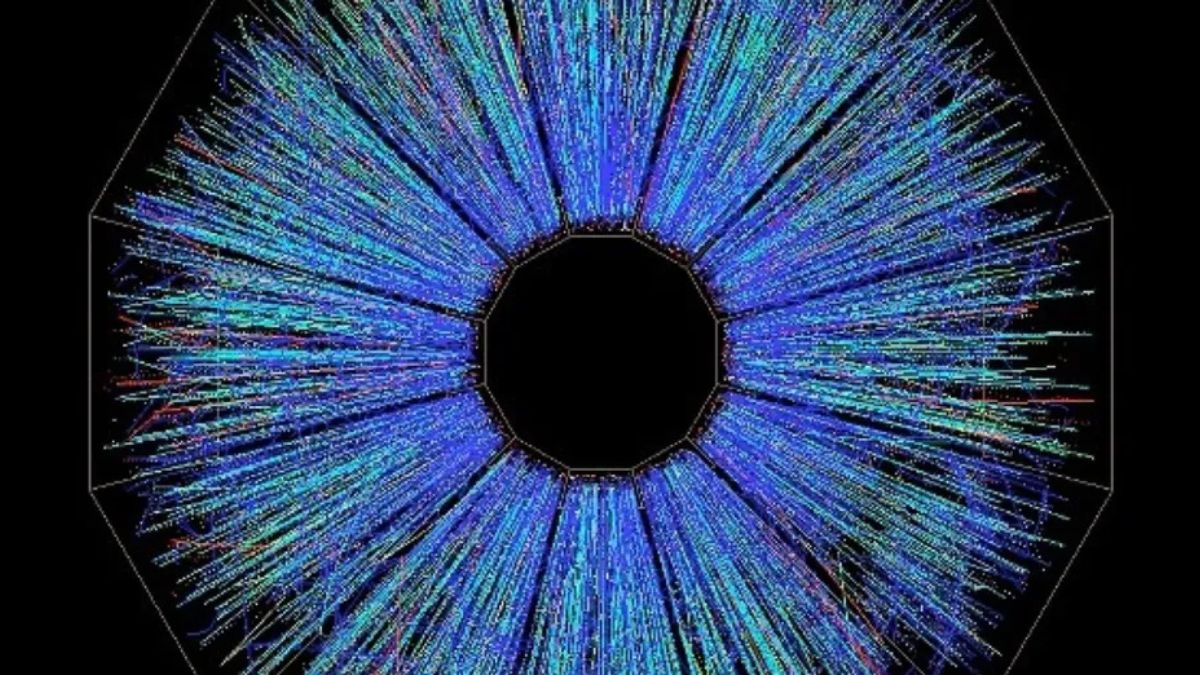Science
Brookhaven’s sPHENIX Detector Set to Unravel Early Universe Mysteries

Scientists at Brookhaven National Laboratory have developed a groundbreaking tool to explore the universe’s earliest moments. The sPHENIX detector, located at the Relativistic Heavy Ion Collider (RHIC), has successfully completed a critical calibration known as a “standard candle.” This achievement positions sPHENIX to detect remnants of the quark-gluon plasma (QGP), a hot, dense state of matter believed to have existed shortly after the Big Bang.
The QGP is temporarily recreated at RHIC by colliding heavy gold ions at nearly the speed of light. This process simulates conditions from the universe’s infancy, allowing scientists to study the properties of this primordial state. With the calibration now verified, researchers can delve deeper into the universe’s formative moments.
Advanced Technology and Precision Measurements
The ability of sPHENIX to accurately measure particle collisions marks a significant milestone. During tests, the detector recorded outcomes from collisions at near-light speed, comparing head-on impacts with grazing ones. It discovered that straight-on collisions produced ten times more particles and energy than their grazing counterparts. This result confirmed that the detector operates as intended.
Weighing in at 1,000 tons and spanning two stories, sPHENIX surrounds the RHIC beams. It can document up to 15,000 collisions per second, functioning like a three-dimensional camera that meticulously tracks each particle’s energy and trajectory. Researchers liken its capabilities to those of a newly launched space telescope capturing its first images, signaling that sPHENIX is primed for groundbreaking discoveries.
Exploring the Primordial Universe
The quark-gluon plasma, a fluid of quarks and gluons, filled the universe in its initial moments. Following RHIC collisions, this plasma cools and condenses into protons and neutrons before vanishing almost instantaneously, typically within 10 to 22 seconds. Only the decay products, or “ashes,” of the QGP persist long enough for sPHENIX to measure and analyze.
By examining these particles, researchers aim to unlock new insights into the origin of matter. They seek to determine the density of the primordial soup and how particles interacted within it. Through this analysis, physicists hope to reconstruct the conditions of the universe during its earliest microseconds, providing a clearer picture of how matter evolved after the Big Bang.
As the sPHENIX detector prepares to begin its research, the scientific community anticipates significant advancements in our understanding of the universe’s beginnings. The findings from this innovative tool may reshape our comprehension of fundamental physics and the processes that shaped the cosmos.
-

 World5 months ago
World5 months agoSBI Announces QIP Floor Price at ₹811.05 Per Share
-

 Lifestyle5 months ago
Lifestyle5 months agoCept Unveils ₹3.1 Crore Urban Mobility Plan for Sustainable Growth
-

 Science4 months ago
Science4 months agoNew Blood Group Discovered in South Indian Woman at Rotary Centre
-

 World5 months ago
World5 months agoTorrential Rains Cause Flash Flooding in New York and New Jersey
-

 Top Stories5 months ago
Top Stories5 months agoKonkani Cultural Organisation to Host Pearl Jubilee in Abu Dhabi
-

 Sports4 months ago
Sports4 months agoBroad Advocates for Bowling Change Ahead of Final Test Against India
-

 Science5 months ago
Science5 months agoNothing Headphone 1 Review: A Bold Contender in Audio Design
-

 Top Stories5 months ago
Top Stories5 months agoAir India Crash Investigation Highlights Boeing Fuel Switch Concerns
-

 Business5 months ago
Business5 months agoIndian Stock Market Rebounds: Sensex and Nifty Rise After Four-Day Decline
-

 Sports4 months ago
Sports4 months agoCristian Totti Retires at 19: Pressure of Fame Takes Toll
-

 Politics5 months ago
Politics5 months agoAbandoned Doberman Finds New Home After Journey to Prague
-

 Top Stories5 months ago
Top Stories5 months agoPatna Bank Manager Abhishek Varun Found Dead in Well









